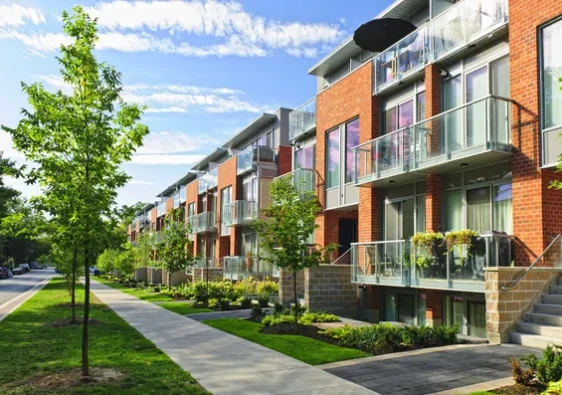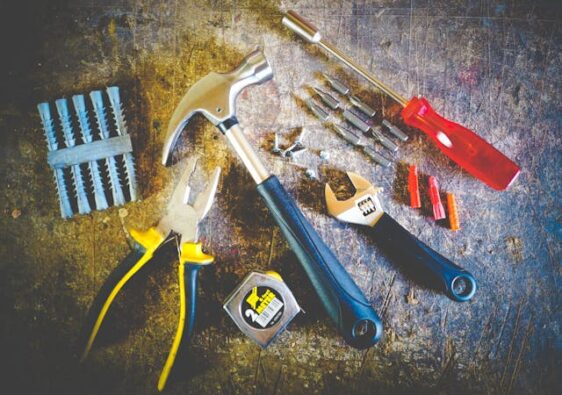Table of Contents:
- Introduction to IoT and Smart Device Integration
- The Evolution of Smart Home Technology
- Security Considerations in IoT Devices
- Interoperability: The Key to Seamless IoT Integration
- IoT Integration in Urban Development
- Overcoming Technical Challenges in IoT Connectivity
- The Role of Data Analytics in IoT
- Empowering Consumers Through IoT Education
- Sustainability and Eco-Friendly IoT Solutions
- Preparing for the Future of IoT
Key Takeaways
- A deeper understanding of IoT’s transformative role in smart device integration.
- Insights into the latest IoT security, interoperability, and data analytics developments.
- Anticipating the future of IoT and its implications for consumers, industry, and urban development.
Introduction to IoT and Smart Device Integration
The notion of the Internet of Things (IoT) embraces a futuristic vision of technology, where everyday items are interconnected in a way that allows them to share information and enhance our daily lives. Devices are no longer standalone entities but are components of a more extensive, dynamic network. The integration of IoT within smart devices is a testament to this evolution, offering countless possibilities for automation and convenience. This networked approach has paved the way for unprecedented collaboration between appliances, vehicles, and technology, ultimately shaping the schemas of modern living spaces.
Moreover, the spike in consumer interest in connected and intelligent homes underlines the significant market shift toward IoT products. These innovations tap into the consumer’s desire for advanced functionalities seamlessly blended with the home environment. Such advances are exemplified by sleek finishes on modern gadgetry that embody sophistication and performance, like those furnished by providers specializing in polish finishes Manhattan NY, showcasing how technology can be aesthetically pleasing. While these groundbreaking developments hold much promise, they also present numerous challenges to developers, such as maintaining user-friendliness, providing continuous updates, and ensuring cross-compatibility among various devices.
The Evolution of Smart Home Technology
Smart home technology has transformed from simple remote-controlled devices to intricate systems that utilize machine learning and artificial intelligence to improve efficiency and adapt to user behaviors. The vision for modern smart homes is about creating a network of devices that can communicate with each other and building an intelligent system that learns and evolves. It combines comfort, efficiency, and personalization—where temperature settings adjust autonomously, lighting conditions adapt to your mood, and security systems provide peace of mind. Market trends suggest that consumers will continue to lean towards automated home environments that can integrate with personal devices and virtual assistants to facilitate a more interactive and accessible living experience.
As technology progresses, integrating smart devices into homes is becoming more seamless, with future smart homes poised to be even more intuitive and self-regulated. Technological giants and startups are pushing the envelope in the IoT space, striving for a blend of functionality that caters to convenience, energy efficiency, and sustainability. Smart homes are the tip of the iceberg in a broader movement towards smarter cities and societies, where IoT’s contributions could significantly alter human living conditions for the better.
Security Considerations in IoT Devices
Security emerges as a paramount concern as smart devices become more entrenched in our everyday lives. The vast amount of personal data circulating through IoT networks presents a tempting target for cyber threats. These threats necessitate developing robust security measures to safeguard against potential breaches. The challenge for IoT manufacturers is ensuring these security protocols are impenetrable and non-invasive, enhancing the user experience rather than hindering it. Regulations are beginning around data protection and IoT security, forcing producers to adhere to stringent security standards.
It’s not just about the devices’ security, the networks they operate over, and the data they collect. As highlighted by reputable sources like Consumer Reports, consumers are becoming increasingly aware of the implications of weak security within IoT devices. They are demanding greater transparency and control over their data. This heightened awareness drives a concerted effort from all corners of the industry to prioritize the development of secure IoT ecosystems that shield users from external vulnerabilities and preserve their trust in connected technologies.
Interoperability: The Key to Seamless IoT Integration
The concept of interoperability stands at the heart of IoT, particularly regarding smart device integration. Interoperability is the ability of different systems, devices, and applications to work together within a given ecosystem. The seamless interaction between devices with diverse origins is not simply a convenience but a necessity for the sophisticated network that IoT aspires to be. Through standardization, principals like open communication and system compatibility are becoming more achievable, allowing for a smoother, more cohesive user experience that vendors and consumers aspire to attain.
Significant headway has been made within industry groups to establish common standards and protocols that benefit users by ensuring their various smart devices can communicate and work together without proprietary restrictions. Indeed, stories of successful integration demonstrate the profound impact of interoperability on the functionality and user-friendliness of IoT ecosystems. Emphasizing the universality of IoT solutions alleviates frustrations and enhances the appeal of adopting such integrated systems among a broader user base.
IoT Integration in Urban Development
Cities are the beating hearts of civilization, and with the IoT revolution, they are pulsing with new vigor. Urban development has embraced IoT to create more intelligent, more adaptive cities that can respond to the needs of their inhabitants in real time. These urban spaces are testbeds for innovation, deploying IoT solutions that address pressing urban issues such as public safety, resource management, and sustainability. For instance, smart sensors can optimize traffic flow, reduce energy consumption, and enhance emergency response systems, making cities more livable, safer, and efficient.
As architects of the future, city planners are tapping into IoT’s limitless potential to devise solutions that transcend traditional urban development practices. Projects integrating IoT are lofty aspirations and measurable realities demonstrating connected technologies’ tangible benefits. Through the considerate application of IoT, urban centers are paving the way for ecological initiatives and improved governance—ushering in an era of enlightened urban exploration.
Overcoming Technical Challenges in IoT Connectivity
While the promise of IoT is undeniable, the path to a fully connected world is fraught with technical challenges. Connectivity issues often arise as one of the primary barriers to a flawless IoT experience. Factors such as signal range limitations, electromagnetic interference, or protocol discrepancies can disrupt the seamless interfacing of devices within the IoT network. These technical hurdles have real-world implications, often manifesting as sporadic performance or diminished usability, dampening the user experience and slowing adoption rates.
Industry professionals and developers are relentlessly exploring new methodologies to address these challenges, and improvements are continually being made. Innovations in network technologies like mesh networking mitigate range issues, while diligent software refinement and sturdy hardware designs improve interoperability and overall IoT resilience. Strategic investment in these areas ensures that IoT’s infrastructure is as robust and reliable as the futuristic vision it supports.
The Role of Data Analytics in IoT
The significance of data in IoT must be addressed. Data analytics provide the interpretative layer that transforms raw data into actionable insights, enabling devices to automate processes and customize interactions based on user behavior. This analytical capability is at the core of IoT’s success, offering the potential to revolutionize how devices serve and communicate with users. Through data, devices gain the ability to predict, adjust, and behave brilliantly, providing a user experience that is not just reactive but also anticipatory and adaptive.
Predictive analytics plays a particularly intriguing role in IoT. By forecasting potential malfunctions or maintenance requirements, predictive analytics can significantly prolong the lifespan of devices and reduce downtime. For the end-user, this means fewer interruptions and a more satisfying interaction with their smart devices. Data analytics also supports the higher-order decision-making necessary for complex IoT applications such as smart grids, where the efficient allocation of resources is paramount.
Empowering Consumers Through IoT Education
While IoT technology advances astonishingly, consumer understanding often needs to catch up. Bridging this knowledge gap is crucial for the widespread acceptance and optimal utilization of IoT devices. Consumer education can lead to more informed purchasing decisions, safer usage, and a greater willingness to embrace new IoT solutions. Programs aimed at educating the public on the benefits and workings of IoT can empower users to become active participants in shaping the future of technology.
Manufacturers, educators, and tech enthusiasts are responsible for developing and distributing resources that demystify IoT. By making information on IoT more accessible and digestible, the barrier to entry for new users can be significantly reduced. An educated consumer base drives innovation and demand and fosters a collaborative ecosystem where feedback and user experiences can shape the direction of IoT development.
Sustainability and Eco-Friendly IoT Solutions
IoT’s potential to create a more sustainable future is one of its most compelling aspects. Devices can contribute significantly to energy-saving initiatives and environmental protection by leveraging IoT’s monitoring and control capabilities. Eco-friendly IoT solutions, such as smart thermostats and lighting systems, allow users to optimize energy use in real-time, potentially reducing their carbon footprint and lowering utility bills. This greater efficiency benefits the individual and contributes to a collective effort to mitigate the effects of climate change.
Moreover, IoT is playing an increasingly important role in promoting sustainable practices across various industries. The applications are diverse and impactful, from agriculture, where sensor technology can lead to more brilliant water use, to manufacturing, where IoT can streamline processes and reduce waste. Integrating environmental considerations into the design and implementation of IoT devices is an ongoing effort that reflects the ethos of a society increasingly focused on sustainability.
Preparing for the Future of IoT
Looking ahead, the future of IoT is brimming with possibilities. The convergence of advanced technologies such as 5G, edge computing, and artificial intelligence will further accelerate the capabilities and reach of IoT. These innovations promise to deliver faster communication, more intelligent data processing, and even more responsive devices, setting the stage for the next evolution of IoT. Preparing for this future means being agile, staying informed, and adapting to these technologies’ rapid changes.
For those invested in the growth and implementation of IoT—whether as users, developers, or industry strategists—keeping a finger on the pulse of emerging trends is essential. Insightful resources such as the latest findings from MIT News on the Internet of Things or the comprehensive reports provided by TechNewsWorld are invaluable tools for navigating the complexities of the IoT landscape. By harnessing this knowledge, stakeholders can make informed decisions that capitalize on current IoT advancements and shape its future trajectory.



